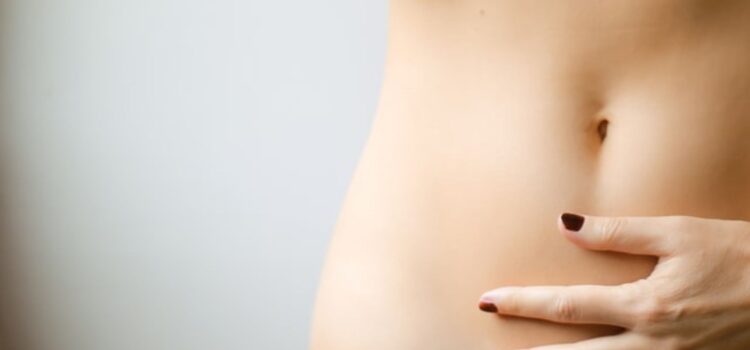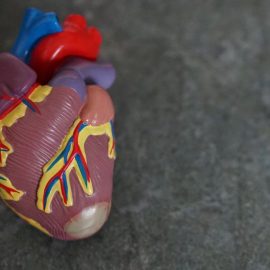

This article is an excerpt from the Shortform book guide to "She Comes First" by Ian Kerner. Shortform has the world's best summaries and analyses of books you should be reading.
Like this article? Sign up for a free trial here.
What is the female sexual anatomy? How does knowing about female anatomy make sex better?
To make sure your female partner has a satisfying orgasm, Ian Kerner in She Comes First says you must understand her sexual anatomy. This is where her pleasure points are, how to stimulate them, and how her body reaches orgasm.
Read more for a better understanding of female sexual anatomy.
The Clitoral Nerve Network
Kerner explains that all female orgasms come from clitoral stimulation. The clitoris nerve network is an important part of the female sexual anatomy and is spread throughout the female sexual region. The outside of this region is called the vulva and the inside is called the vagina.
The clitoris is primarily stimulated from the vulva where the nerves are most sensitive—only a small bundle of clitoral nerves can be stimulated from inside the vagina. Kerner elaborates that the external clitoral nerves are extremely sensitive (much more than the penis) which is why cunnilingus is the best way to stimulate them—the tongue is soft, gentle, and can be far more precise than your penis or fingers.
The most sensitive part of the clitoral network, and the part that drives most female orgasms, is the clitoral head. Kerner warns that the head is so sensitive that overstimulation can be uncomfortable, or even painful, making orgasms difficult.
History of the Clitoris
In She Comes First, Kerner explains that the clitoris is the key for women to reach orgasm, and that it’s a far-reaching nerve network spreading from the outside of the vulva, through the pelvis, and into the vaginal canal. Experts explain that medical professionals have only recently understood the full extent of the clitoral network and its functions (like the ultra-sensitivity of the clitoral head and the other hot spots in and around the vagina that stimulate the clitoris). This knowledge gap, which Kerner attempts to fill, is largely due to an intentional exclusion of women from medical research until recently and a dismissal of information regarding female sexual health for years afterward.
The primary reason why women have historically been excluded from medical research is that female anatomy was often considered to be “taboo.” In the 20th century, researchers excluded women from clinical trials because (1) they thought male and female bodies were essentially the same, (2) they worried that fluctuations in hormones during menstruation would throw off results, and (3) they didn’t want research to impact women’s fertility. They add that the full anatomy of the clitoris wasn’t discovered until 1998, only 5 years before the original publication of She Comes First. Even today, most textbooks inadequately portray the clitoris, lacking detail and including inaccuracies.
She Comes First is one of the first efforts to relay the true nature of the clitoris to the public. Since its publication, several individuals have joined the effort including Sophie Wallace, who calls the subject “cliteracy.”
After the clitoral head, the most sensitive part of the vulva is the front commissure where the clitoral shaft is visible. A similarly sensitive point is the spot below the head where the inner lips of the vagina meet, called the frenulum. Next is the perineum—the stretch of skin between the vaginal entrance and the anus. After the frenulum is the labia minora—the sensitive inner lips that protect the head, urethra, and vagina. Last but not least is the labia majora, or the outer lips. Kerner emphasizes that each of these parts is very important in the arousal and stimulation process, regardless of where they rank from most to least sensitive.
During Kerner’s instructions on cunnilingus, he also references a few other parts of the female anatomy that aren’t very sensitive but can be used to help stimulate your partner. First, there’s the fourchette—the point right below the vaginal entrance where the inner lips meet. Next is the mons pubis, the bony area above the vulva where pubic hair usually grows. Finally, the anus can also be a point of stimulation.
The Four Steps of Sexual Response
Once you understand the clitorial network and its key players, Kerner explains that you must understand the female sexual response process. Kerner divides the process into four steps: excitement, plateau, orgasm, and resolution.
The first step in the process of female sexual response is excitement. When a woman first becomes aroused, her mind and body prepare her for a sexual encounter. First, chemicals and hormones are released that emotionally prepare her for sex. Then her body responds—breasts increase in size, blood flow to the pelvic area increases, the clitoral head protrudes from the hood, and the vagina begins to lubricate.
After excitement is plateau, the stage where arousal tends to increase until it’s released through orgasm. During the process, muscle tension will build, the clitoral network will become more sensitive and the clitoral head will go back into its hood, and breathing and heart rate will increase. Right before orgasm, the clitoral head will emerge again.
After plateau, the next step is orgasm. Orgasm is when the built-up tension from plateau releases all at once. When orgasm occurs, the vaginal walls contract rhythmically and the woman will experience waves of pleasure for 10-20 seconds on average. Some women release ejaculate—Kerner notes that this is a unique alkaline liquid from the female equivalent of the prostate, not urine.
The final step is resolution—the stage where she returns to a pre-aroused state. Kerner explains that this stage varies greatly between men and women. Women take much longer than men to return to this state, meaning that they remain aroused longer and can have consecutive orgasms. Further, whereas men tend to be tired after orgasm, women tend to want more interaction like talking and cuddling.
Criticism of the Four-Phase Model
In the book, Kerner describes the female sexual response with the traditional “four-phase” model. However, this model has been widely criticized as having a male bias.
First, the traditional model assumes that “excitement”—the mental desire and physiological preparation for sex (like the vagina lubricating and the penis getting erect)—can happen automatically without any physical stimulation. While this is the experience of many men, it isn’t true for most women. Further, the model asserts that the sexual response process is linear—you experience excitement, plateau, orgasm, and resolution in that order and then the process is over.
While this is mostly true for men, women can move forward and backward through the steps and experience the model as a continual cycle—resolution can lead seamlessly back into excitement and start the process over again. In response to this criticism, multiple newer models have been developed including the triphasic model, the circular model, and the dual-control model. We’ll elaborate on each of these models in later commentary.

———End of Preview———
Like what you just read? Read the rest of the world's best book summary and analysis of Ian Kerner's "She Comes First" at Shortform.
Here's what you'll find in our full She Comes First summary:
- Why traditional sexual practices leave women unsatisfied
- Why men should ensure their female partner orgasms first
- An instruction manual on how to satisfy women and engage in the best sex possible






